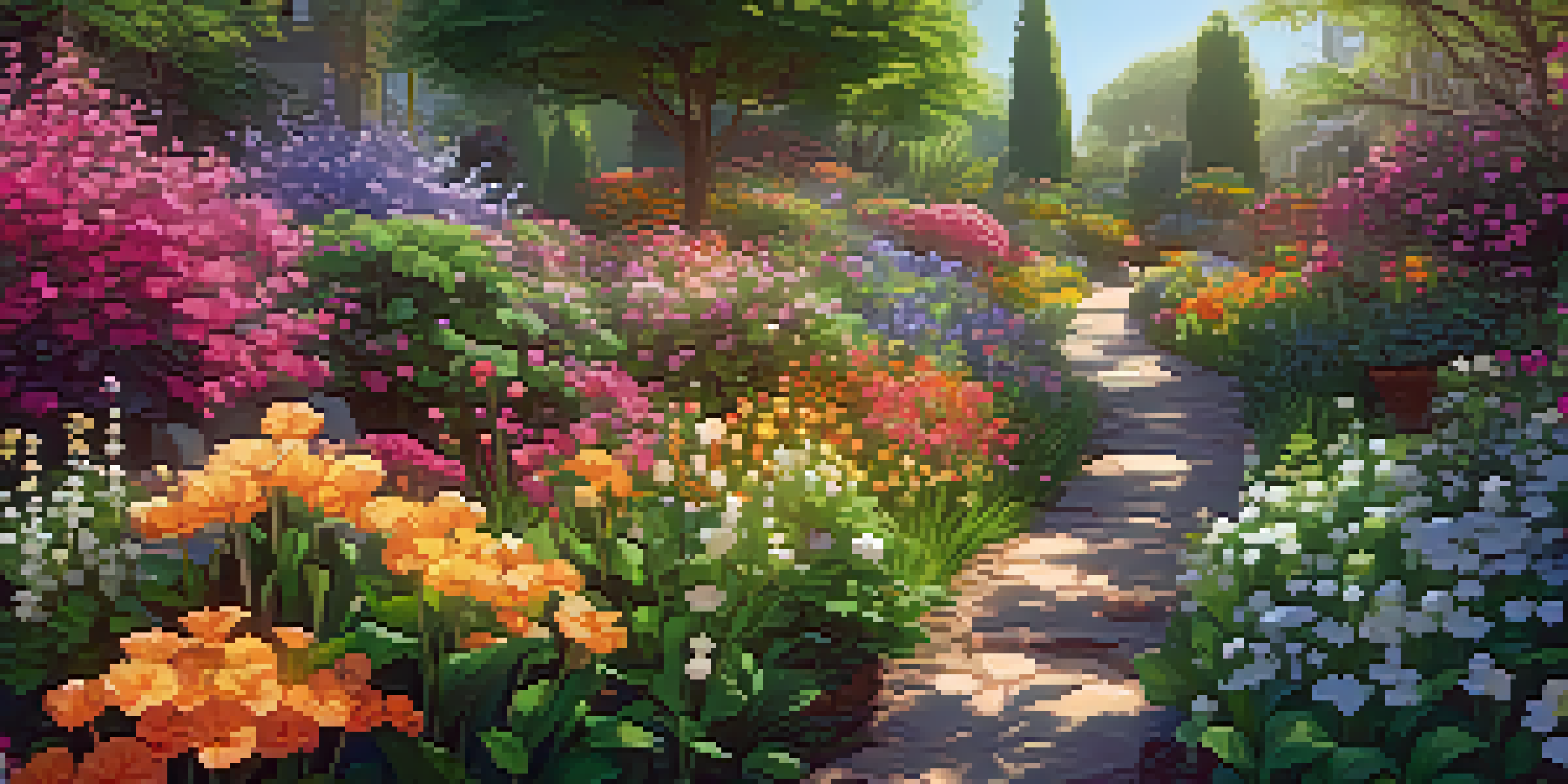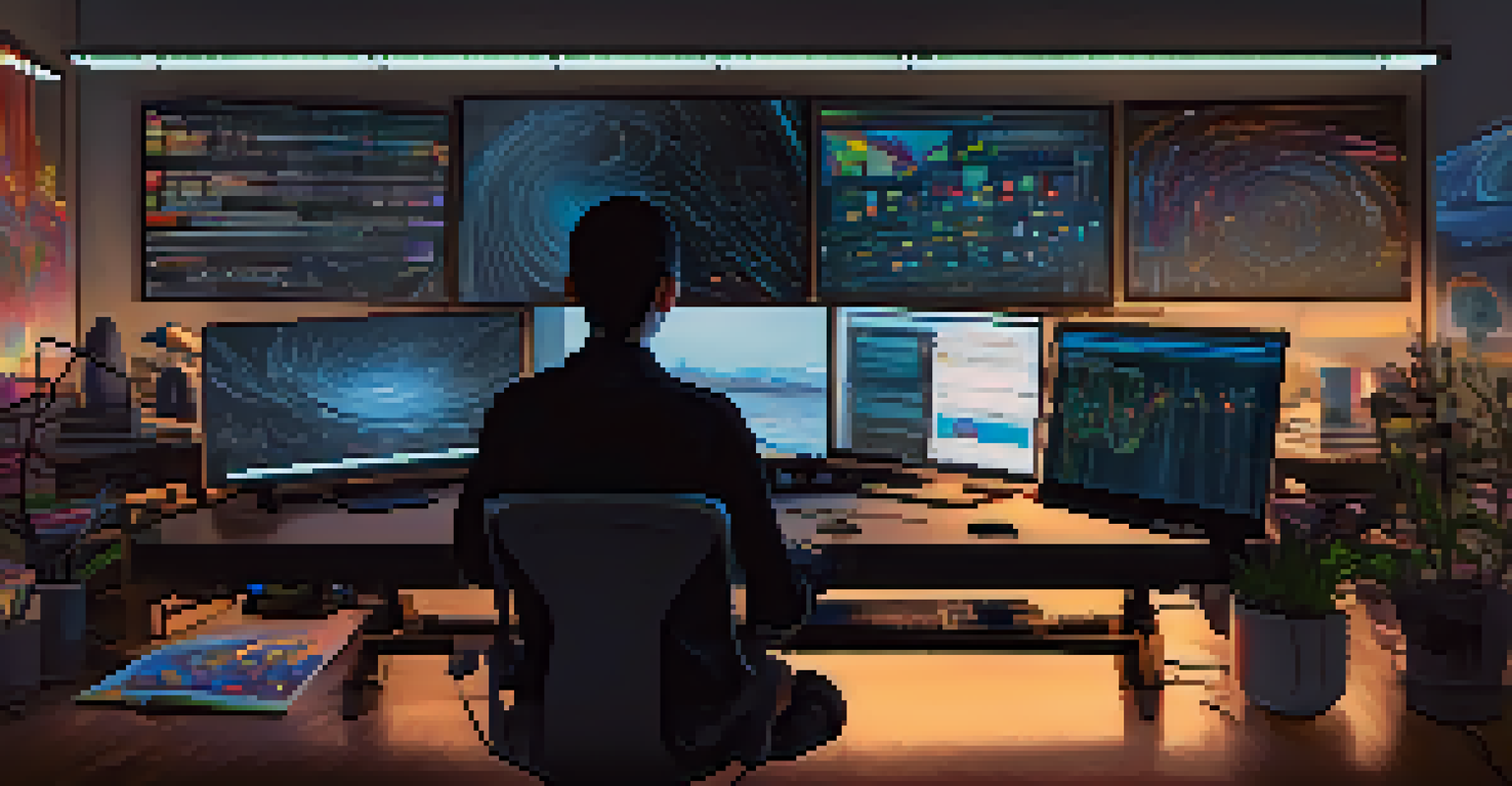Code as Canvas: The Intersection of Programming and Art

Understanding the Fusion of Art and Programming
At the heart of the digital age lies a fascinating intersection where art meets programming. This blend creates a unique space where creativity is expressed through code, allowing programmers to become digital artists. By treating code as a medium, developers can craft visually stunning pieces that resonate with audiences on multiple levels.
Art is the most beautiful of all lies; it is the truth of the world and the world of truth.
Think of programming as a paintbrush and the computer as a canvas. Just as a painter mixes colors to create a masterpiece, a coder uses syntax and algorithms to bring their vision to life. This approach not only enhances the aesthetic appeal of software but also invites viewers to appreciate the artistry behind the logic.
As we explore this dynamic relationship, we begin to see the potential for limitless creation. From intricate animations to interactive installations, the fusion of code and art opens doors to innovative expressions that challenge traditional boundaries.
The Role of Generative Art in Programming
Generative art is a prime example of how programming can create captivating visuals. This art form relies on algorithms to produce artwork that is often unpredictable and unique. Artists write code that generates images, animations, or sounds, resulting in pieces that evolve every time they are executed.

Imagine a digital garden where each bloom is created by a set of rules defined by the artist. Just like nature, the results can be beautiful, chaotic, and sometimes surprisingly harmonious. This unpredictability adds a layer of intrigue, as no two outcomes are ever exactly the same.
Art and Programming Unite
The fusion of art and programming allows creators to express their creativity through code, transforming software into visually stunning artworks.
Generative art not only showcases the creative power of programming but also emphasizes the collaborative relationship between artist and machine. By embracing this partnership, artists push the envelope of what is possible, inviting viewers into a world where technology and creativity coexist.
Notable Artists Blending Code and Creativity
Several artists have made waves in the realm of code-based art, showcasing how programming can be a powerful creative tool. One such artist is Casey Reas, co-creator of Processing, a programming language designed for visual arts. His works often explore the relationship between algorithmic processes and aesthetic outcomes, pushing viewers to reconsider their perceptions of art.
The computer is a canvas, and the code is the brush with which we create our art.
Another prominent figure is Rafael Lozano-Hemmer, known for his interactive installations that merge architecture and technology. His projects often rely on data and real-time processing, creating immersive experiences that engage the audience directly. This level of interaction challenges traditional notions of passive art consumption.
These artists, among many others, demonstrate that the boundaries of art are continually expanding. By integrating code into their creative processes, they inspire a new generation of artists to explore the endless possibilities at the intersection of technology and art.
The Impact of Technology on Artistic Expression
Technology has significantly transformed how artists create and share their work. With tools like virtual reality, augmented reality, and artificial intelligence, the landscape of art continues to evolve. These advancements not only enhance the creative process but also broaden the audience's experience, allowing for more immersive interactions.
For instance, virtual reality can transport viewers into a 3D space where they can engage with art from angles previously unimaginable. This level of interactivity breaks down barriers between artists and audiences, fostering a deeper connection with the work. Meanwhile, AI can assist in generating ideas or even creating art autonomously, raising questions about authorship and creativity.
Generative Art's Unique Appeal
Generative art exemplifies how algorithms can produce unpredictable and unique visuals, showcasing the dynamic relationship between artists and technology.
As we embrace these technologies, it's essential to consider their implications on artistic integrity and authenticity. The challenge lies in finding a balance between leveraging technology and preserving the human touch that defines true artistry.
Bridging the Gap: Coding for Artists
As the intersection of art and programming continues to grow, there's an increasing need for artists to develop coding skills. Learning the basics of programming can empower artists to explore new creative avenues and expand their artistic toolkit. Fortunately, many resources are available, from online courses to community workshops, making it easier than ever to get started.
Imagine an artist who can not only paint but also design an interactive website showcasing their work. By embracing coding, artists can take control of their digital presence and create customized experiences for their audiences. This versatility can lead to innovative projects that stand out in a crowded art landscape.
Ultimately, bridging the gap between art and programming can lead to a richer, more dynamic creative process. When artists equip themselves with coding skills, they open up a world of possibilities, enabling them to push the boundaries of their art in exciting new ways.
The Future of Art in a Code-Centric World
As we look ahead, the future of art seems inextricably linked to the evolution of technology and programming. With each new development, artists have the opportunity to redefine their practices, exploring new mediums and forms of expression. This ongoing dialogue between art and technology promises to yield innovative approaches that challenge our understanding of creativity.
Consider how blockchain technology is revolutionizing the art market, allowing artists to sell digital works as non-fungible tokens (NFTs). This shift not only provides a new revenue stream but also raises questions about ownership and value in the digital age. Artists are now tasked with navigating these complex landscapes, ensuring their voices are heard amidst the noise.
Future of Art with Technology
As technology continues to evolve, artists are presented with new mediums and opportunities to redefine their practices, leading to innovative expressions of creativity.
The future holds exciting prospects for those willing to embrace the melding of code and creativity. As artists continue to experiment with technology, we can expect to see a flourishing of new ideas and a reimagining of what art can be.
Embracing Creativity in Coding Communities
The programming community is increasingly recognizing the importance of creativity within its ranks. Hackathons, coding competitions, and collaborative projects encourage developers to think outside the box and explore their artistic inclinations. These events foster an environment where innovation thrives, bridging the gap between technical skills and creative expression.
Imagine a hackathon where participants are challenged to create a visual artwork using only code in 48 hours. This type of collaboration not only inspires creativity but also builds camaraderie among coders, allowing them to learn from one another. The result is a vibrant community that celebrates both technical prowess and artistic vision.

By embracing creativity within coding communities, we can cultivate a new generation of programmers who view their craft through an artistic lens. This shift can lead to groundbreaking projects that redefine the role of technology in our daily lives, ultimately enriching our cultural landscape.